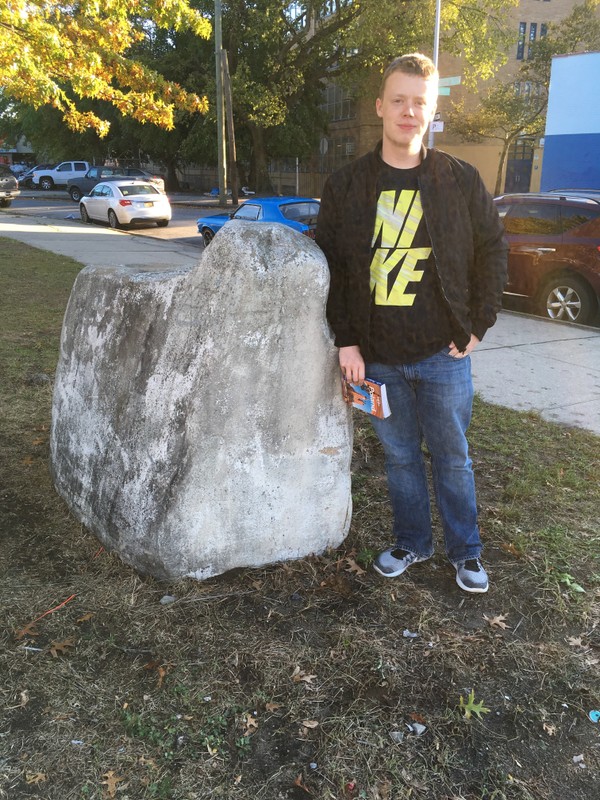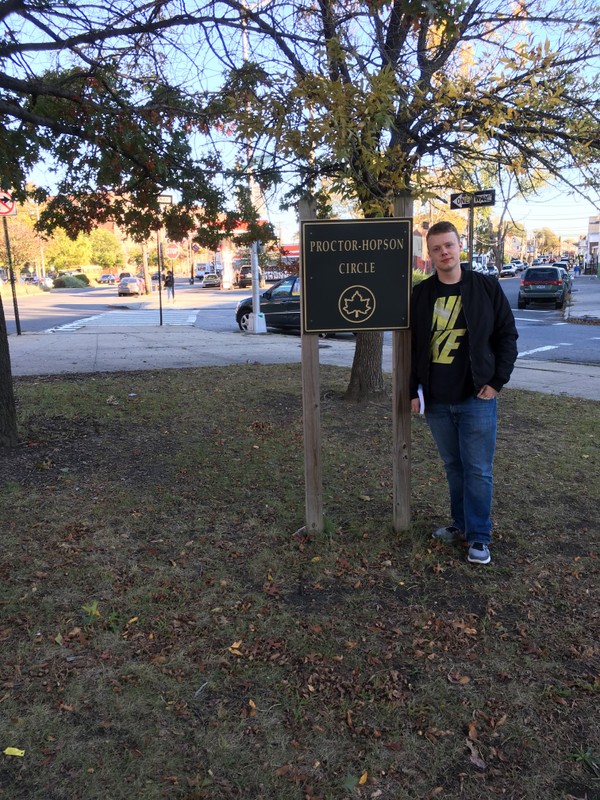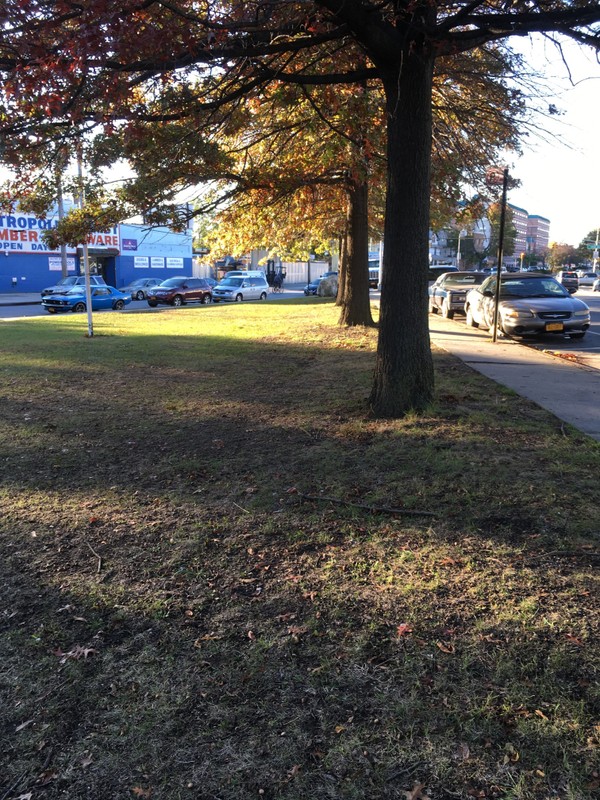Proctor-Hopson Circle
Introduction
Text-to-speech Audio
Images
Rock present at the traffic circle on the West side of the park. The rock is bare, but it may serve memorial purposes.

Sign with the surnames of the veterans John Proctor and Arthur Hopson on the East side of the park

Grassy area and vegetation in the park facing West. Photo by .

Backstory and Context
Text-to-speech Audio
At this point in history, the United States Army drafted Black and white to segregated units.1 The 369th Infantry of the National Guard was an all-Black combat unit under the command of white officers that grew out of the 15th New York National Guard Regiment. The men themselves, however, referred to the unit as the Harlem Rattlers as they believed the rattlesnake to represent power.2 The regiment was one of the first American units sent to France in response to their pleas for troops, and they initially were only used as laborers to construct a supply base.3 However, the 369th was eventually assigned to 16th division of the French army to be trained and would see 191 days in combat, which is longer than any other American unit in World War I. Their efforts contributed to pushing back a German offensive and retaliate with a counteroffensive, and without this American addition to the Allied troops, Germany offensive could have been successful and they may have won the war.1
The 369th Infantry was renowned for their bravery and resilience when fighting with the French at the Chateau-Thierry and Belleau Wood. They were known to refuse surrendering and fight regardless of the availability of supplies and circumstances. They were even the first of the Allies to reach the Rhine.1 This attitude and these achievements would earn the unit the Croix de Guerre which is considered to be France’s highest honor.3
However, African American soldiers faced discrimination that did not ease with their gallant war efforts. They were not allowed to participate in New York National Guard farewell parade called the Rainbow Division on the account that “Black is not a color in the Rainbow.”1 American authorities even requested that the French preserve segregation and cited faulty studies about Black inferiority. Participation in the war did not have much effect regarding equality for African Americans. Despite the persistence of racist attitudes towards the soldiers, the commander of the 369th, Colonel William Hayward, ensured that his men received a victory parade upon returning to the United States in February 1919.1 Given the additional struggles and lack of recognition Black soldiers faced, memorials such as the Proctor-Hopson Circle are especially important to remember what must not forgotten.
Cite This Entry
Julianne Bazydlo and Andrew Lee. "Proctor-Hopson Circle ." Clio: Your Guide to History. September 27, 2019. Accessed March 27, 2025. https://theclio.com/entry/49161
Sources
1."Photographs of the 369th Infantry and African Americans during World War I." National Archives and Records Administration. September 23, 2016. Accessed November 01, 2017. https://www.archives.gov/education/lessons/369th-infantry.
2. Gropman, Alan L. "Harlem’s Rattlers and the Great War: The Undaunted 369 ..." Harlem’s Rattlers and the Great War: The Undaunted 369thRegiment and the African American Quest for Equality. 2015. Accessed November 1, 2017. http://www.bing.com/cr?IG=DDEE536363C34C799AC9878376BB2E67&CID=1A92ACC14140673E325DA7EC40466648&rd=1....
3.Maxwell, Jeremy. "Harlem's Rattlers and the Great War: The Undaunted 369th Regiment and the African American Quest for Equality." Journal Of Military History 78, no. 4 (October 2014): 1455-1456. America: History and Life with Full Text, EBSCOhost (accessed November 1, 2017).
4."Dedicate Square to Negro Heroes at South Jamaica ." The Brooklyn Daily Eagle , October 24, 1932. Accessed November 1, 2017. https://www.newspapers.com/clip/6679368/the_brooklyn_daily_eagle/.
5.“VFW Post 1896 Proctor Hopson Post.” Jamaica : VFW Post 1896 Proctor Hopson Post (Vfw) - World War I Centennial, United States Foundation for the Commemoration of the World Wars, 14 Feb. 2017, www.worldwar1centennial.org/index.php/vfw-posts-honoring-wwi-veterans/1081:vfw-post-1896-proctor-hop....
Julianne Bazydlo (October 30, 2017)
Julianne Bazydlo (October 30, 2017)
Julianne Bazydlo (October 30, 2017)

